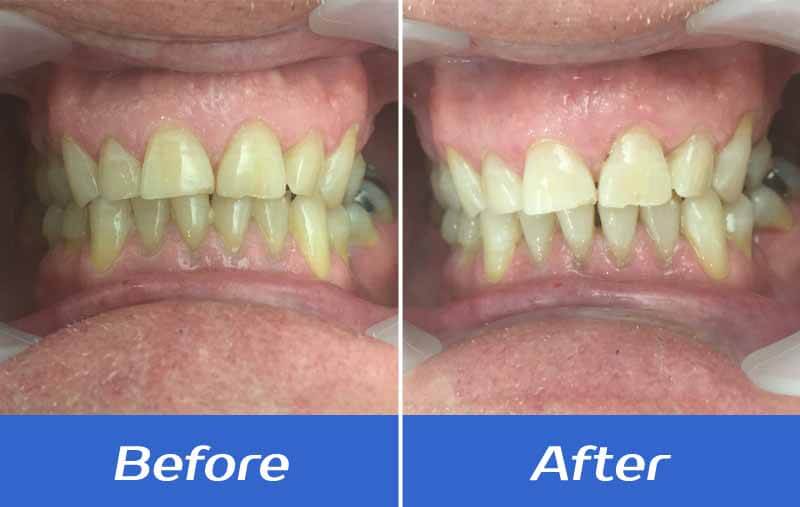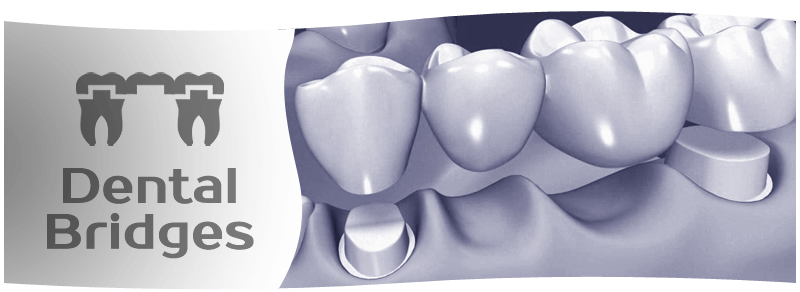
A gap from a missing tooth or set of teeth can hamper us from smiling, laughing, or speaking in an appropriate manner. We may just simply cover our mouths or try to avoid socializing out in the open public. Some of us may have tried using dentures to tackle the problem but more often than not, we end up in frustration with the instability and interminable upkeep.
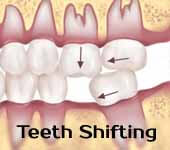
While the most advanced and commonly recommended solution for replacing missing teeth is with dental implants, a more stable and quite permanent solution compared to using dentures in restoring your smile is with dental bridges.
A fixed dental bridge can effectively fill gaps left by your missing teeth, thus preventing the remaining teeth from rotating or shifting into the empty spaces, which would eventually result in an occlusion issue (bad bite). Furthermore, this imbalance caused by your missing tooth/teeth can also lead to gum disease and/or TMJ (temporo-mandibular joint) disorders. And unlike dentures, a dental bridge is literally cemented into place over your existing natural teeth, so there is no need to remove them for regular cleaning; you just brush and floss your teeth in the same way like with your natural teeth.
TYPES OF DENTAL BRIDGES
There are various materials in which a dental bridge may be made from, but the preferred choice is usually porcelain, as it would be easy for your dentist to blend the color of the bridge with your existing natural teeth. Optional materials for fabricating a dental bridge are metal, a combination of porcelain and metal (PFM), or ceramics.
Also, there are 3 types of dental bridges according to the actual placement procedures which you can discuss with your dentist and come up to what would be the ideal type for you. This boils down to factors like the location of the missing tooth or teeth, the main function of the dental bridge, aesthetic features, and costs of the procedures involved.
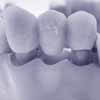
Traditional Bridges – the most typical type of dental bridgework used, traditional bridges involves a fabrication of 2 dental crowns on both sides of the missing tooth and the pontic, or main artificial tooth in the middle. The crowns on both sides serve as “caps” and are to be placed over the existing natural teeth.
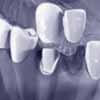
Cantilever Bridges – A cantilever bridge is used when only a single side of your missing tooth has an available natural tooth present for placing the crown/s over. This use of this is seldom nowadays and hardly recommended as it puts the supporting tooth/teeth at risk due to absorbing excessive biting forces, most especially when replacing teeth at the back of the mouth.
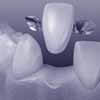
Maryland Bridges – also known as resin-bonded bridgework, this type is designed in such a way that “wings” are bonded at the back of your existing teeth, instead of placing over crowns/caps on them. Maryland Bridges are primarily developed to mellow-down the necessary alterations needed for your existing natural teeth as opposed to traditional bridges.
Dental Bridge Procedures

In general, it takes two appointments to our dental clinic in order to complete a dental bridge treatment procedure. Your first appointment typically involves the initial assessment and consultation wherein your dentist will check your overall oral condition. If the result confirms your candidacy for a dental bridge, it will be followed by a set of procedures that would include:
The surrounding teeth that will be used to support the bridgework will be prepared by shaving off small amounts of enamel to properly accommodate the crowns that’ll be placed over them.
Your dentist will take an impression of both the prepared teeth and existing natural ones so that our in-house dental laboratory can start fabricating the bridgework.
The prepared teeth will be covered-up by a temporary bridge for protection while the final dental bridge is being fabricated. The temporary bridge also serves as protection for your gums while waiting for your final bridgework.
Upon the completion of your final dental bridge from our dental lab, your second appointment will be scheduled. During the second appointment, your dentist will carefully remove the temporary bridge and check the prepared teeth again just to make sure they’re clean and healthy before fitting your final and permanent dental bridge. Necessary adjustments will be made to make sure the dental bridgeworks fits and blends perfectly with your existing natural teeth and full mouth features, including your bite. Finally, your dental bridgework will be cemented in place using a special bonding material. In some cases, your dentist may require follow-up appointments for further adjustments.
After-Care for Dental Bridges
Good oral hygiene and proper eating habits are essential in maintaining dental bridges. With appropriate use and care, a dental bridge can last over 10 years, or even a lifetime. They main key is keeping the dental fixture, as well as your whole mouth “clean” by regular brushing and flossing regularly. You may as well need to put an extra effort around the bridge area, particularly where it meets your natural teeth, because the supporting natural teeth needs to be at their healthiest condition to be able to provide adequate support to your dental bridge.
A floss-threader may be used to help dental floss get under the bridge, or you can use small interdental brushes for thorough cleaning. Make sure you stick to a healthy diet and do visit your dentist on a regular basis (at least twice a year) for an early detection to any problems regarding your oral health condition.
Treatment Quicklinks
Int'l Contact Numbers









